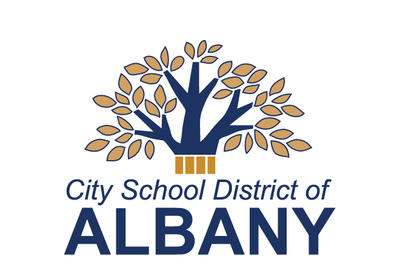
With the Martin Luther King Jr. holiday and Black History Month coming up, City School District of …ū Ņ¬ĢĽ≠ Superintendent Kaweeda G. Adams recently discussed the evolution of the teaching of African-American history in schools and the district’s integration of The 1619 Project into the high school curriculum.
Adams, a native of Shreveport, La., sat down Jan. 8 with a reporter from “On Board,” the weekly newspaper of the New York State School Boards Association. She described The 1619 Project as “eye-opening” in its examination of the impact of slavery on the growth and development of the United States.
“It taught me to rethink some of the things I learned in school,” she said. “The atrocities of slavery were not the eye-opening part for me. The epiphany came when I started reading about the economics of slavery, looking at it through the very different lens of a capitalistic society that progressed, advanced and became wealthy at the expense of other human beings.”
is an ongoing initiative from “The New York Times Magazine” that began in August 2019, the 400th anniversary of the beginning of American slavery. It aims to reframe the country’s history by placing the consequences of slavery and the contributions of African-Americans at the center of our national narrative.
Director of Curriculum, Instruction and Professional Development Karen Bechdol, district instructional supervisors in the English Language Arts and Social Studies departments have worked with high school teachers in those content areas over the past 18 months to integrate elements of The 1619 Project into the high school curriculum.
It is an important component of the district's focus on equity and culturally responsive teaching and learning.
In the Social Studies Department at …ū Ņ¬ĢĽ≠ High, teachers have adapted the Pulitzer Center lessons from The 1619 Project to be in alignment with the New York State Framework for Social Studies standards, said Instructional Supervisor Michael Elliott.
The lessons are most often used in American History, Government and Economics courses to engage students in analysis and discourse, necessary components of a culturally responsive education that is geared toward civic awareness and empowerment.
“The 1619 Project has breathed new life into Social Studies instruction,” Elliott said. “It allows teachers to marry contemporary and underrepresented perspectives with traditional history instruction that often neglects to address the contributions and experiences of African-Americans.”
In one lesson, Elliott noted, a student entered the following comment in the Google Classroom chatbox: “Talking about African-American history is my favorite because my elementary and middle school taught us to be proud of our culture and everything through the perspective of other Black people.”
“This simple statement exemplifies the relevance and importance of The 1619 Project,” Elliott said.
Understanding the origin of societal structures is critical to making positive changes, Adams said.
“The events of our history have impacted where we are today, and those themes of the past are relevant today,” she said, adding that “we have to understand our history to know what we have to do in the moment to make things better so we can improve our future.”
An emphasis on student voice, social justice and anti-racist teaching are additional elements the district is incorporating into lessons, in large measure an outcome of the Black Lives Matter movement and related social themes that gained momentum locally and nationwide last summer.
The focus in the classroom is on independent analysis, critical thinking and discourse.
“Students are not told the answer,” Adams said. "They are able to evaluate on their own based on the information that they are able to synthesize. It pushes the learner into those higher levels of thinking and decision-making, which is a skill we need in life."
In the ELA curriculum, elements of The 1619 Project support and promote the broader implications of that work in Social Studies, said Secondary ELA Instructional Supervisor Jennifer Houlihan.
“We focus our energy in English Language Arts on integrating diverse authors and perspectives into our curriculum, fostering rigor and relevance through the lens of equity and culturally response education,” Houlihan said.
“We are constantly closely examining our curriculum to ensure we are lifting the voices of our students while also attending to voices in the texts we teach that have been historically marginalized, oppressed, omitted or silenced, inspired by the work of Tricia Ebarvia, Lorena Germán, Dr. Kimberly Parker and Julia Torres of the #disrupttexts movement.”
The superintendent also noted that the district strives across all grade levels to integrate an examination of diverse cultural and historical perspectives throughout the school year, rather than focusing that instruction around isolated events such as Hispanic Heritage Month in September and October, and Black History Month in February.
"We have looked to have a natural integration of the study of African-Americans and other races, because a group of people didn’t just exist during a particular recognition month," she said. "We are embedding those themes throughout the year so that it becomes a natural integration in our curriculum and a natural integration of the connection of people."




